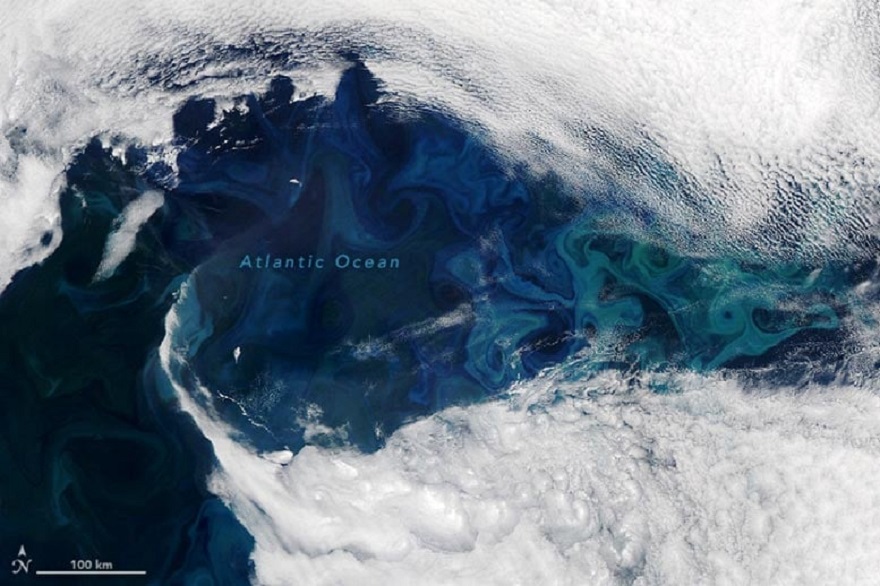NASA’s Aqua satellite has captured an incredible image of an algae bloom off the coast of Greenland. This is due to the spread of phytoplankton — tiny algae of different species. When the water gets warmer in summer, they start to proliferate.

Amazing photo
On June 16, NASA’s Aqua satellite photographed the Atlantic Ocean near Greenland. In the resulting photo, you can observe an amazing picture — blurred waves of different shades of green, spreading against the background of dark sea depths.
This is an algae bloom, similar to what is observed in our water bodies. Scientists began to notice its individual signs as early as the end of May. However, all this time the sky over Greenland was covered with clouds, so the satellites couldn’t get a high-quality image.
Finally, the MODIS instrument, the Moderate Resolution Imaging Spectroradiometer, has succeeded. The image clearly shows a section of the Atlantic about 800 km wide east of Greenland and south of Iceland.
Why scientists are interested in algae blooms
In fact, algae blooms are a process of phytoplankton proliferation. The latter are microscopic algae that live in the water column. It contains quite a few different species that give the water different hues. For example, coccolithophores are coated with calcium carbonate and can give the water a milky color, diatom algae — brown, while the rest provide various shades of green.
None of these plant species actually produce blooms. However, this does not prevent them from being extremely important to the ocean. Phytoplankton is the base of the food pyramid in the ocean. It provides food for crustaceans and fish, and these provide the basis for the diet of larger creatures.
Phytoplankton also play a crucial role in oxygenating ocean water. When it blooms it provides the process of photosynthesis, when it dies it begins to rot and can cause marine life to suffocate.
At the same time, the distribution of phytoplankton in the North Atlantic is determined by the inflow of warm water. It can serve as an indicator of global warming. That’s why scientists monitor it closely.
According to scitechdaily.com


